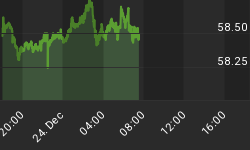The Federal Crisis Inquiry Commission (FCIC) had as much chance of satisfying the public as the Warren Commission did of closing the debate on the Kennedy assassination. The FCIC published its report on January 27, 2011. This was the "Final Report of the National Commission on the Causes of the Financial and Economic Crisis in the United States." The FCIC itself could not come to a conclusion. The Democrats wrote for the majority, the Republicans for the minority, and a think-tank fellow motored off on a tangent of his own.
By the way, these conclusions, cleaved by the politics of the season, demonstrate the immaturity of Washington. It does not represent. The members could not forsake their hobbyhorses to address the time bomb that, unaddressed, will explode. A half-century's accumulation of bad debt tumbled over in 2008 and a much larger mountain of waste and ruin lies ahead.
My gripe: the FCIC found the greatest fault with the effects rather than the cause. This is true of all three conclusions. The cause of the crisis was too much money and credit. An economy needs enough credit to operate but not so much that speculation runs the country. (This, of course, is so obvious that it might seem a waste to write, but the so-called policymakers rev the cyclotron faster and faster.)
Among the "Conclusions" of the Financial Crisis Inquiry Commission Report, the majority averred: "[I]t is the Commission's conclusion that excess liquidity did not need to cause the crisis. It was the failures outlined above - including the failures to rein in the excesses in the mortgage and financial markets - that were the principal cause of the crisis."
Readers may remember Advice to the Financial Crisis Inquiry Commission: How to Question Alan Greenspan. This was a letter I wrote before the FCIC's hearing on subprime lending, addressed to FCIC Chairman Phil Angelides, in anticipation of former Federal Reserve Chairman Alan Greenspan's testimony. Paragraph number three follows:
The Federal Reserve is Cause, Not Effect, for Abuses in Subprime Lending
There would have been no lending of any sort without the Federal Reserve. The Fed prints the money that enters the economy. It has a monopoly. Counterfeiters know that.
Credit springs from money. The commercial banking system produces credit, by and large. The Federal Reserve sets reserve requirements on commercial bank credit growth. If the Fed sets the bank reserve ratio at 10:1, a bank cannot lend more than $10 for every $1 on deposit. That effectively limits the growth of credit.
The Federal Reserve has the authority to increase or decrease bank reserve requirements at any time. During Alan Greenspan's chairmanship, the Fed reduced bank reserve requirements several ways; it never increased them. The result of the Greenspan Fed's money and credit expansion: commercial banks, having run out of proper projects to fund, lent to investment banks, hedge funds, private-equity funds, subprime mortgage lenders, and commercial property speculators. (An investment bank may have lent to a non-bank mortgage company, but it first had to borrow from the commercial banking system.)
The Federal Reserve, under Alan Greenspan, both printed every dollar that entered the economy and had sole authority to set bank reserve requirements. If the Fed had reduced reserve requirements, this would have restricted the lending that proved so destructive.
There is, of course, much more than I have written above for a full understanding of money and credit, but Alan Greenspan will not attempt to enlighten the commission....
Greenspan's testimony was indeed reprehensible, but let him rust.
In 2011, Federal Reserve Chairman Ben S. Bernanke is the cause of various asset-price inflations. He is increasing money at a rate far beyond Alan Greenspan's worst excesses. The overinvestment (also called "liquidity" or "speculation") has destroyed potential returns of promising enterprises. To distill the current investment environment: "I have a better chance of a triple buying Chinese dot.coms than investing in a profitable solution to world hunger, and the Fed's rigged the markets, so I'm making money fast before everyone realizes Vegas is a squarer deal."
Frederick Sheehan writes a blog at www.aucontrarian.com
















